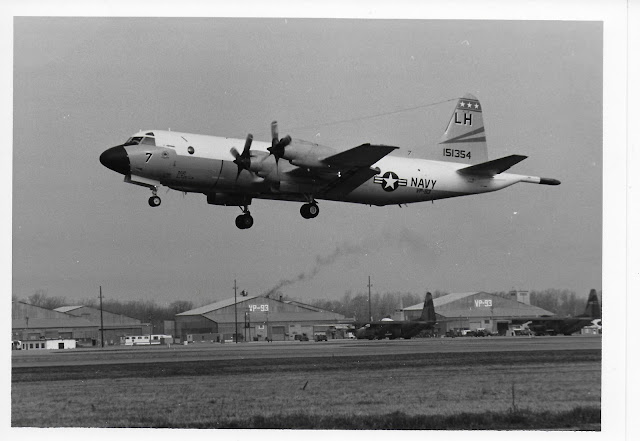 There were a lot of differences, internal and external. The F-4D had the APQ-109A RADAR set resulting in the front cockpit having a different shaped glare shield and a larger combining gun sight and mount. This was not a HUD as come call it, but was actually a combining reflective glass gun sight. Also on the front glare shield were different shaped RWR and ILS scopes. The FCP pedestal panel had added control boxes and switches.
There were a lot of differences, internal and external. The F-4D had the APQ-109A RADAR set resulting in the front cockpit having a different shaped glare shield and a larger combining gun sight and mount. This was not a HUD as come call it, but was actually a combining reflective glass gun sight. Also on the front glare shield were different shaped RWR and ILS scopes. The FCP pedestal panel had added control boxes and switches.
Rear cockpit in the F-4D had a larger and higher instrument panel. On the right console was the addition of the bomb nav control panel. The F-4D used a bomb nav computer for better weapons delivery which the F-4C did not have. If you are building a "Smart D" capable of carrying smart bombs than the RCP will have a square RADAR scope, not the round one. "Smart D's" had the APQ-109V RADAR set, so the scope was square and could produce an image like a TV. There was a circuit breaker panel added, just beside the WSO's right leg, down low and forward on the right console.
The F-4D had a different ECM system and the signal processor housed in the Radome Chin Pod was much larger. That is why the F-4D had the hump on the Chin Pod and the F-4C didn't. The RHAW antenna on the vertical fin was more rounded on the F-4D, not pointed like the F-4C.
No operational F-4 Phantom carried the IR sensor. The F-4A tested it but it never became operational on any version of the F-4. The chin pod was built into the F-4B with hopes of including the IR sensor but never came to be. The F-4C was designed to incorporate changes the USAF needed, such as engine cartridge start capability, anti lock brakes, INS, and many others. The F-4C was basically a F-4B airframe with improvements the Air Force needed. The chin dome was common on all F-4C aircraft. The USAF operated Navy F-4B Phantoms as a test. They were stationed at McDill AFB, Florida. They were called the F-110. As the Air Force began receiving their F-4C's they returned their F-110's back to the Navy and were renamed F-4B's.
When the Air Force went to MDD to design the F-4D, a lot of changes were added. One was to eliminate the chin dome as it wasn't needed. As the war in SEA showed, some type of ECM was needed to warn crews of radar lock on, missile launch and danger. The chin pod was replaced back on the radome of the F-4D and was used to house the ALR-46 ECM. The ALR-46 had a larger processor so the hump was added to make room for it. The F-4C used a different type ECM with a smaller processor and fit into the nose dome without any modification.
The Herpes mod was added later with an improvement of the ALR-46. Only a few of the D's were modified as funding ran out when the defence budget was slashed. By then the F-4D was leaving active USAF service and being replaced by the F-4E and F-16A/B. The Guard and Reserve was even giving them up in favor of newer more capable aircraft.
The F-4C did use the Navy style pylons, inboard and outboard, until they converted to the newer style. If you look close at the Navy style inboard pylon you will see it is actually a "Zero Launch" AIM-7 launcher. In order to carrry anything other than an AIM-7 required a pylon adapter. The adapter allowed TER's, Sidewinder launchers and other ordinance to be carried. Everything had to be mounted on the adapter. TER's could not be jettisoned without jettisoning the adapter. The bad thing there is if it is carrying Sidewinders, you would also jettison them.
The USAF style inboard pylons had a MAU-12 bomb rack built into the pylon. It isn't as streamlined, is much heaver, but it will carry a heaver load. The Sidewinder launchers are mounted to the pylon allowing direct connection of anything to the bomb rack, without an adapter.
Early F-4C and D's also used the Navy style AIM-9 launchers. Many can be seen loaded on the F-4 in the early war time in SEA. By 1968 most had converted to the newer style USAF launcher. The old Navy style were used for many years by the Guard and Reserve units into the 1980's.
The RF-4C continued to use the Navy style inboard pylon through out its service. It carried only an ECM pod or travel pod on that station so a Bomb rack wasn't needed.
The second fighter variant ordered by the U. S. Air Force was the F-4D. Externally, it looked much the same as the previous F-4C, but the easiest way to tell the difference was to look at the infrared housing under the radome. F-4Cs had a smooth housing, and although some early F-4Ds had no fairing at all, most had a fairing with a noticeable bump on the underside. The configuration of the hump would change over the service life of the F-4D, but it was always there in one form or another.






















